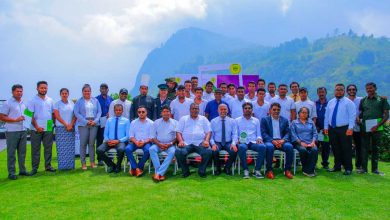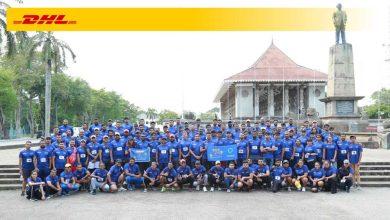MMCA SRI LANKA
Artists Honor Minnette De Silva’s Legacy at the Watapuluwa Housing Scheme

The Museum of Modern and Contemporary Art Sri Lanka (MMCA Sri Lanka) exhibition titled ‘88 Acres: The Watapuluwa Housing Scheme by Minnette De Silva’ is the MMCA Sri Lanka’s first solo exhibition, and looks at the Watapuluwa Housing Scheme and the pioneering work of Sri Lankan architect Minnette De Silva (1918–1998).
The exhibition focuses on the Watapuluwa Housing Scheme in Kandy, designed by De Silva and opened in 1958. The Scheme heralded a new form of social housing in Sri Lanka, and was notably created with the participation of its users. ‘88 Acres’ explores how this sprawling hillside development was ahead of its time in providing affordable accommodation for a diverse ethno-religious community of government public servants in Sri Lanka. Alongside a specially commissioned artists’ film titled ‘Is this an architectural documentary?’ (2023) by Irushi Tennekoon (b. 1989), Sumedha Kelegama (b. 1988), and Sumudu Athukorala (b. 1980), ‘88 Acres’ looks back at the Scheme 65 years later to consider De Silva’s influences and the challenges of her design approach.
The three artists share their thoughts on the architecture, the documentary they created and Minnette De Silva (1918–1998).
1. In ‘Life and Work of an Asian Woman Architect Vol. 1’ (1998) Minnette De Silva traces her interest in architecture to when Oliver Weerasinghe, the Town Planner, lent her some journals. What made you get into the field of architecture/design?
Irushi: Early inspiration came from the predominantly Western-illustrated picture books and animated films I had grown up watching. As I continued in my practice there were several factors that made me realise that I can tell stories about home and the everyday people and places that make it special.
Sumedha: Architect Channa Daswatte and late Professor S. B. Dissanayake have always been my role models. Their innovative thinking, impactful writing, and exemplary work deeply inspired my passion for architecture from a young age.
Sumudu: I got into architecture totally by accident. I always wanted to be an artist, and since I was child I wanted to explore the world of filmmaking. Having that intention in mind, I chose to pursue art subjects for my A Levels. During my A Level years, one of my brother’s friends who was studying architecture came to visit my brother. Knowing that I was interested in the arts he encouraged me to try architecture as it would suit my ambitions well. After that incident I started to think of becoming an architect despite not knowing much about the subject.
2. Your film is not a typical architectural documentary. Can you talk about what makes it different and why?
Irushi: Documentaries typically rely on historic artefacts and photographic evidence. When we began our documentary on the Watapuluwa Housing Scheme designed by architect Minnette De Silva, we didn’t have many primary documents related to the Scheme. We therefore started by gathering oral histories from the scheme’s residents and those who knew or worked with her. Animation played an important role by allowing us to re-imagine De Silva’s experiments with regional modernism, and also helped us to approach this story with a sense of whimsy and curiosity.
Sumedha: The documentary is crafted as an ‘artist’s documentary’, featuring layers of drawings, animations, research, and interviews created by the three of us. It represents the culmination of our research and artistic experimentation. Inspired by filmmakers like Michel Gondry and Nathaniel Kahn, this approach that we have experimented with seamlessly blends our investigative work with creative elements to produce an architectural documentary.
Sumudu: The three of us have been working in the creative and design field for years, and we had previously worked together on an animated short film. Our approach was not to make a typical documentary film but to create something different which would have a unique style. Since it is a collaboration of three different styles, thoughts, and creative thinking, naturally the film came out to be unique and distinct.

3. Were there any specific aspects of Minnette De Silva’s personality, philosophy, or approach to architecture that stood out to you during the filmmaking process?
Irushi: What I found very special about Minnette De Silva is her practice of documenting her work and process as evidenced in her autobiography. By looking through the lens of my own practice which involves detailed documenting and archiving of my work, I was able to better understand her efforts.
Sumedha: Minnette continually explored and experimented with her architectural approach, which paralleled our own process during the filmmaking. We experimented with various methodologies to effectively tell stories while simultaneously conveying architectural philosophies.
Sumudu: Minnette De Silva was not caught in the colonial architectural influence nor the ideas that came from the Western modern movement. She experimented with an architectural language which was more suitable and sustainable to this region. Considering the era she worked in, it may not have been an easy approach. She definitely had to go through a difficult process to achieve that.
4. The MMCA Sri Lanka commissioned you to carry out the research on the Watapuluwa Housing Scheme, which led to your film, and in turn the exhibition and the publication ‘Second Volume’. What was the experience like, of working with the MMCA Sri Lanka in this manner?
Irushi: Working closely with the museum’s Chief Curator Sharmini Pereira and the team at the MMCA Sri Lanka on this project has been an absolute privilege. It was a collaboration from the beginning and there was a generous sharing of knowledge and ideas that allowed both the film and exhibition to turn into what it did. By being closely involved with the museum’s public programmes, we were able to engage with audiences and share the nuances behind our research through various Tours, Gallery Talks, and Reading Groups. Our collaborative research, writings, and the transcript of our film are now published in the museum’s first research publication titled ‘Second Volume’, further enabling future scholarly research to be continued on Minnette De Silva.
Sumedha: It has been quite a remarkable journey. From the outset, the MMCA Sri Lanka provided us with a platform to create a 60-minute documentary, demonstrating immense patience and support throughout our experimental process. Collaborating with the curators was an incredibly educational experience. The networks we fostered during the creation of the documentary, as well as through assisting with the exhibition and publication, were truly special.
Sumudu: It was a remarkable opportunity for us and a great experience to work closely with the MMCA Sri Lanka. The process of making the film and showcasing our research in the exhibition opened us to a new world of arts and creativity. We got to meet wonderful personalities like Sharmini. Through our research, and the subsequent film and exhibition, our thinking about architecture, Minnette De Silva, and filmmaking has also evolved.
The MMCA Sri Lanka is an education-led initiative that aims to establish a public museum dedicated to the display, research, collection, and conservation of modern and contemporary art for the benefit and enjoyment of the general public, schools, and tourists. The museum is open daily from 10am to 6pm (except on Poya days and public holidays) at the ground floor of Crescat Boulevard, Colombo 3, and entrance to the museum and all its public programmes is free. Information about the museum and its exhibitions and public programmes can be found via their website www.mmca-srilanka.org, or on Facebook at facebook.com/mmcasrilanka and Instagram at instagram.com/mmcasrilanka/.






